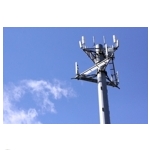 Momentum is growing for the creation of a global 5G spectrum band in the 3.5 GHz band, according to a new report from ABI Research. Citing regulatory announcements from “about 20 countries,” ABI said the C-Band (3.4-3.8 GHz) is “emerging with the most global consensus for the timely launch of commercial 5G . . . in 2019.”
Momentum is growing for the creation of a global 5G spectrum band in the 3.5 GHz band, according to a new report from ABI Research. Citing regulatory announcements from “about 20 countries,” ABI said the C-Band (3.4-3.8 GHz) is “emerging with the most global consensus for the timely launch of commercial 5G . . . in 2019.”
The U.S. likely is among the 20 or so countries that ABI references, as the FCC is currently considering rules aimed at facilitating the use of spectrum in what is known in the U.S. as the CBRS band (3550-3700 MHz). The FCC previously established rules aimed at making it easier for small wireless internet service providers (WISPs) to obtain licenses to support fixed broadband wireless service in the CBRS band but is reconsidering those plans in response to a petition made by CTIA – The Wireless Association, which represents major mobile wireless service providers.
Regulatory rethinking about the 3.5 GHz band reflects a shift in 5G development efforts away from higher-frequency millimeter wave spectrum bands, ABI noted in a press release about the new report titled “Analysis of 5G Spectrum.”
A Global 5G Spectrum Band?
Initial 5G spectrum plans focused on higher-frequency spectrum because only at high frequencies were wide swaths of spectrum available to support the highest data rates expected for 5G. Some 5G trials have used higher frequencies, and carriers including AT&T and Verizon have acquired higher frequency spectrum with the goal of supporting high-speed 5G services.
The downside of higher-frequency spectrum, however, is that equipment operating at higher frequencies has less range than lower-frequency spectrum, requiring cellsites to be deployed more densely. And some operators seem to be questioning the wisdom of making that investment at this time.
A lack of global availability of high-frequency spectrum for 5G also may be driving new thinking on this topic, the ABI researchers suggest. The researchers argue that in the long term, “the whole breadth of the sub-1 GHz to 100 GHz spectrum range will be critical to address the various use cases and meet enhanced speeds, latency, reliability and other 5G metrics in different usage scenarios.” In the short term, however, the researchers said use of millimeter wave for 5G service in 2019 -2020 is limited “due to technology challenges and global spectrum availability.”
As support for the creation of a global 5G spectrum band in the 3.5 GHz range grows, it may become increasingly difficult for wireless ISPs to retain support for initial CBRS band plans.
Meanwhile, the FCC last week continued efforts to free up higher-frequency spectrum above 24 GHz when it maintained unlicensed use of the 64-71 GHz band, adjusted earth station siting rules in “core terrestrial wireless bands” to provide incentives to site satellite earth stations in less populated areas, declined to cap the amount of spectrum in the 24 GHz and 47 GHz bands that a bidder can acquire in an auction and incorporated the 24 GHz and 47 GHz bands into the previously-adopted millimeter wave spectrum threshold for reviewing proposed secondary market transactions. The commission also is proposing to eliminate the cap on the amount of spectrum in the 28, 37 and 39 GHz bands that a bidder can acquire in an auction.


